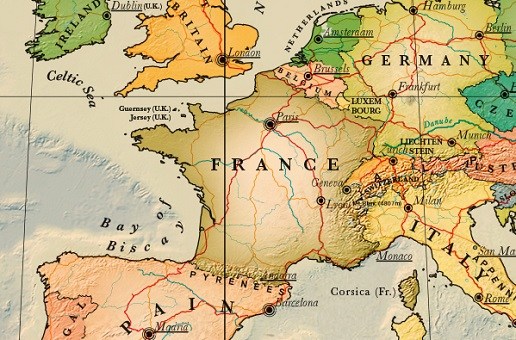
Starting up north in Brittany, we take you round the country on a tour of the chateaux you won’t want to miss.
NORMANDY
Name: Caen castle
Place: Caen
Era: Mediaeval
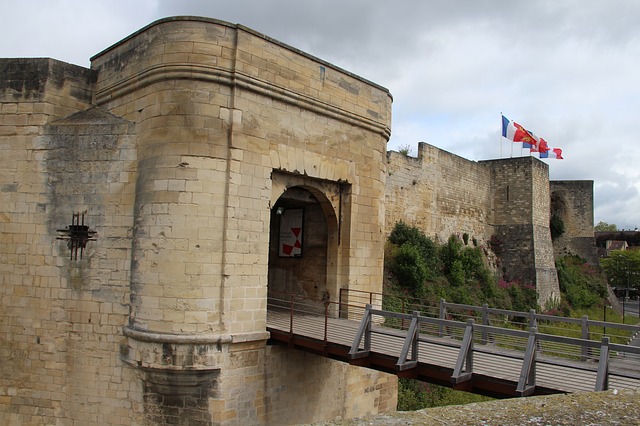
A true fortress, this castle was built for the Duke William the Conqueror in 1060 just before he led the Norman Conquest of England. His successful invasion clinched him the title of the first Norman King of England. With its thick walls, sturdy towers and ramparts (which are great to walk along), there’s no doubt that this castle was built to protect and defend. The castle is surrounded by lush sloping hills and now houses the Museum of Normandy and the Museum of Fine Arts. There is also a Michelin-recommended restaurant in the grounds, Café Mancel, which is perfect for a quick snack or a romantic meal against a beautiful floodlit backdrop in the evening. Make the most of your time in Caen by visiting the D-Day landing beaches and the WWII memorial museum.
Name: Château du Champ de Bataille
Place: Le Neubourg, an hour’s drive from Le Havre
Era: Renaissance
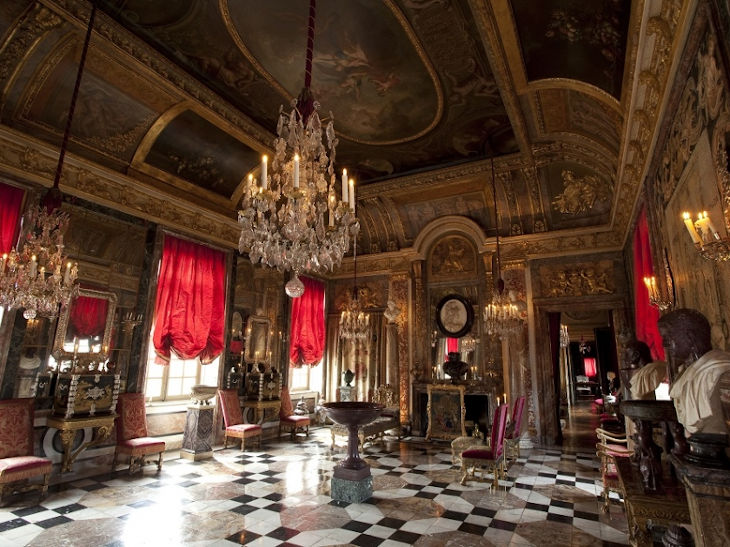
Should you be misled into thinking that the splendour of truly majestic castles is particular to the Loire Valley, then the Château du Champ de Bataille will happily set the record straight. This palatial 17th century château – whose names translates as Battlefield Castle – was built by a noble turned rebel and inspired by the royal courts he was banished from. In recent years, it was bought and sublimely refurbished by French interior designer Jacques Garcia, who has turned it into a showcase for his vast collections of artworks and regalia. The French formal garden outside is equally as impressive, with impeccably sheared shrubs and a long stretch of laid-out gardens that run up to the castle. Perfect for a taste of the castle lifestyle!
Name: Beaumesnil Castle
Place: West of Evreux
Era: Renaissance
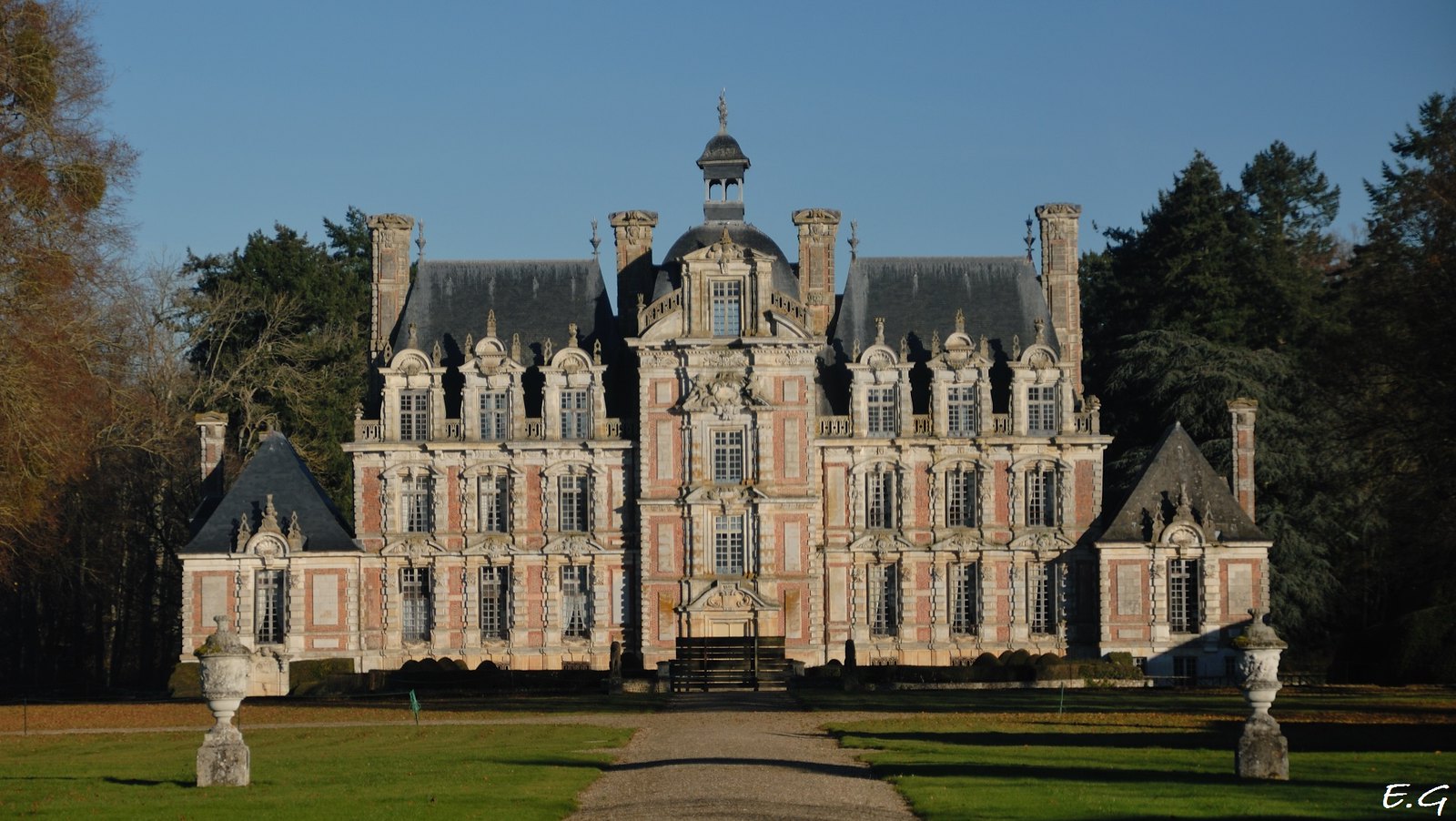
Another stately masterpiece, poised delicately in the middle of a lake, Beaumesnil Castle is a jewel in the heart of Normandy. Its history is just as romantic as its appearance, as the château was built by Jacques de Nonant for his wife in the 17th century on the site of a former mediaeval castle. All the rooms are furnished, so it’s easy for visitors to get a feel for how things were in time gone by. These days, the castle celebrates French gastronomy with special themed-visits demonstrations and children’s cookery classes. Outside, visitors can sit and picnic in the grounds to admire the castle and its lake in all its splendour.
BRITTANY
Name: Josselin castle
Place: Josselin, in Morbihan
Era: Originally dates back to the Middle Ages - 1008 to be precise
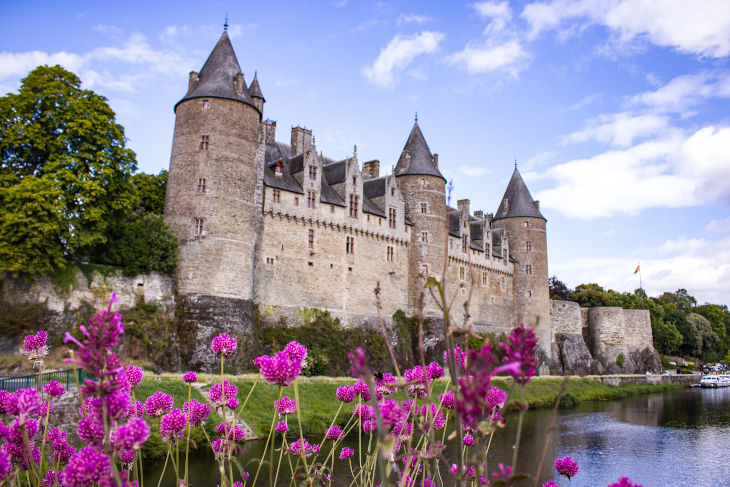
Like many castles, this fortress was extended and enhanced over many centuries. The result is an elegant blend of mediaeval and Renaissance styles. Josselin castle is located on the banks of the Oust river and houses a doll and toy museum. The gardens are spectacular and include a formal French garden, an English garden and a rose garden. Guided tours start in the courtyard before moving inside.
Name: Vitré Castle
Place: Vitré, east of Rennes in Brittany
Era: Mediaeval
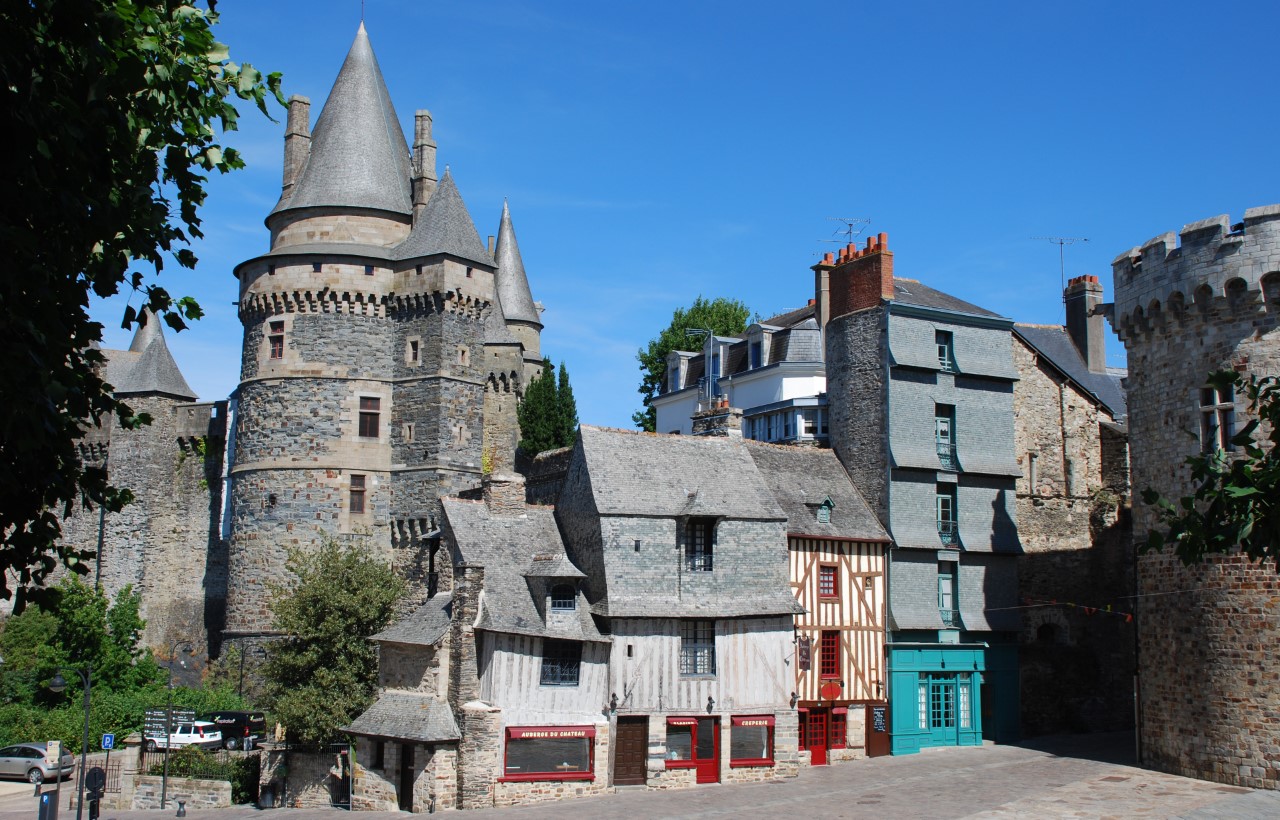
This mediaeval fortress sits snugly among the half-timbered village houses that it was built to protect back in the 11th century. The imposing façade features a drawbridge flanked by distinctive twin towers, sturdy and circular topped with slate-covered turrets. The castle was later used as a prison in the 19th century before becoming a listed heritage site in 1872 and undergoing a full refurbishment. Today, it houses a museum and an Escape Game, which is sure to add an exciting twist to your visit. All year long, the village of Vitré comes alive at nightfall with special lighting effects that show the local monuments in all their splendour and take you along the journey of its past.
PARIS
Name: The Palace of Versailles
Place: Versailles, near Paris
Era: Renaissance
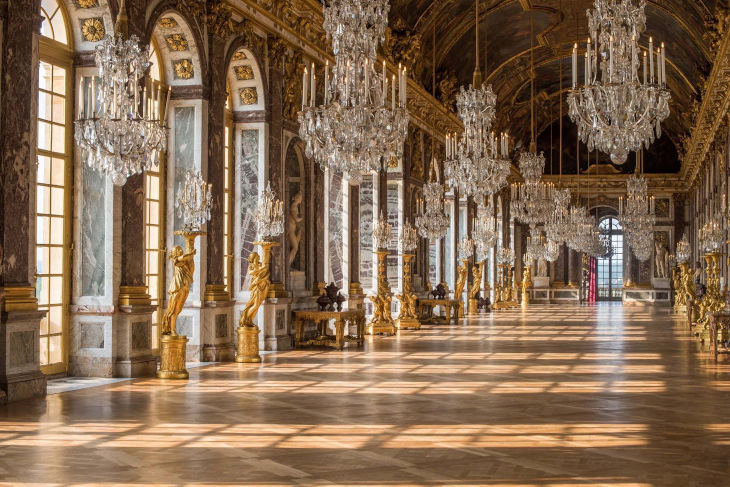
This palace is perhaps the most illustrious example of French architecture with a wow factor that knocks it out the park. It was built in 1623 by Louis 14th, the Sun King and was the royal residence until 1789, when Louis 16th was forced to flee during the uprising of the French Revolution. This eccentrically sumptuous palace counts no less than 2,300 rooms and what seems like a gazillion windows.
Gold, gilding, mirrors and fountains abound. A day at Versailles is a feast for eyes and a marathon for the feet – the chateau and the grounds are gigantic and sure to entertain the most reticent of castle goers.
Name: Pierrefonds
Place: Near Compiègne, north of Paris
Era: Mediaeval gothic with a touch of Renaissance
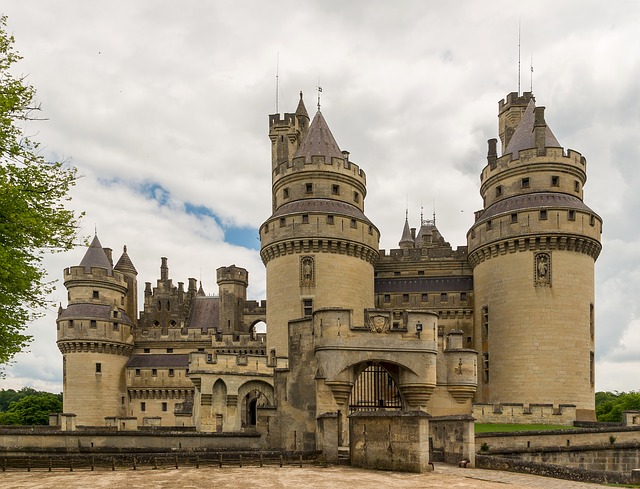
This magnificent castle could be plucked straight from the silver screen. It was built in fits and starts over several centuries, which explains the combination of architectural styles. Louis d’Orléans began the construction in the 14th century, but religious wars saw the fortress dismantled and abandoned in the 17th century. Two hundred years later, Napoleon III had the chateau restored to its final state. Intricate mouldings and gargoyles on the outside are equalled by a rich, elegant décor and furnishings on the inside, while down in the crypt, light and sound effects create a surreal atmosphere around tomb sculptures of former rulers. The castle brings the Middle Ages alive in the summer with jousting tournaments and a children’s treasure trail. A must for anyone who thinks history has to be boring!
LOIRE VALLEY
Name: Chambord Castle
Place: Chambord, Blois (west of Orleans)
Era: Renaissance
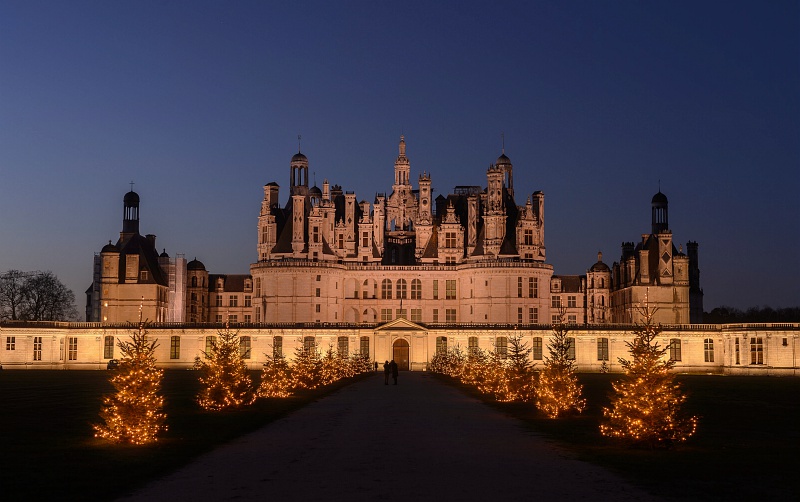
The Loire Valley has more than its fair share of stunning castles, but Chambord is the largest and undoubtedly the most iconic. This majestic wide-spanned castle has four circular towers topped with intricate roof features, cuppolas, and a whopping 282 chimneys. Surrounded by a moat and set in a deer-filled natural reserve on the banks of the canal, it’s a magical sight day and night.
Chambord was commissioned by King Francis 1st in 1519 as a hunting lodge, designed neither for defence or residence but for pure pleasure. The chateau’s main focus and centrepiece is the double spiral staircase, said to be inspired by Leonardo Da Vinci, which allows guests to go up and down at the same time without meeting.
The castle may be steeped in history, but it’s certainly not gathering dust. Visitors can choose from a wide range of guided visits: A Da Vinci themed exhibition in 2019, children’s scavenger hunts, performing arts events, and Knights and Birds of Prey reenactments, or explore the estate by boat, bicycle, golf buggy or on horseback. 2019 marks the castle’s 500th anniversary and will be celebrating in style all year long.
Name: Chenonceau
Place: Chenonceaux (between Orleans and Tours)
Era: Renaissance
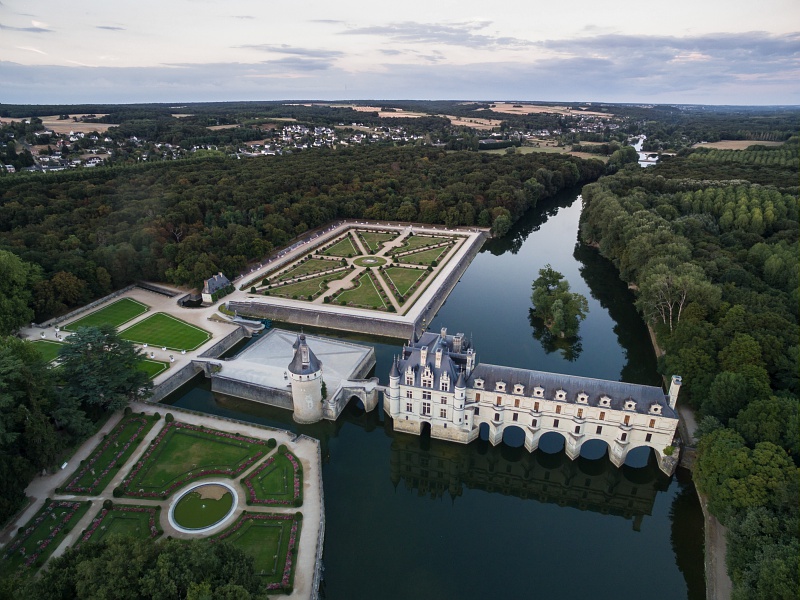
Another idyllic example of architectural elegance and design mastery. Chenonceau’s quirky design means it actually spans the River Cher, poised as if on stilts atop a row of arched bridges, with its reflection creating a truly enchanting effect.
The original 15th-century castle included a mill, although the version we know today was built between 1515 and 1521 by Thomas Bohier (Chamberlain to King Charles 8th). King Francis 1st was known to pop over, along with many other French nobles of the time. It is known as the Ladies’ Castle, having been owned by a string of noble women, including royal mistresses and widows. In 1559 it became home to Catherine de Medicis, who lavished her Italian flair on the property, commissioned the gardens and threw decadent parties. Her legacy lives on through the castle’s gourmet restaurant and wine cellar.
Name: Azay-le-Rideau
Place: Near Tours
Era: Renaissance
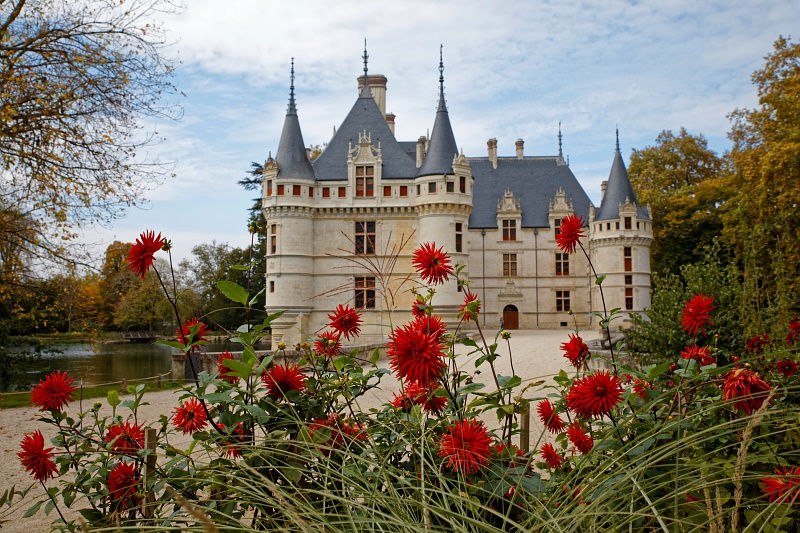
Azay-le-Rideau is a more modest but perfectly formed castle which is a delight to visit and to contemplate. It was built by King Francis I in the 16th century and has a beautiful Renaissance style with a dash of Italian influence. The château sits on a lake which creates an enchanting sight as its pretty reflection stands out in the water. It’s small enough to visit easily and leisurely before wandering round the quaint village just outside the castle walls and stopping for a welcome refreshment at a pavement café.
Name: Ussé Castle
Place: Rigny-Ussé, between Tours and Saumur
Era: Renaissance
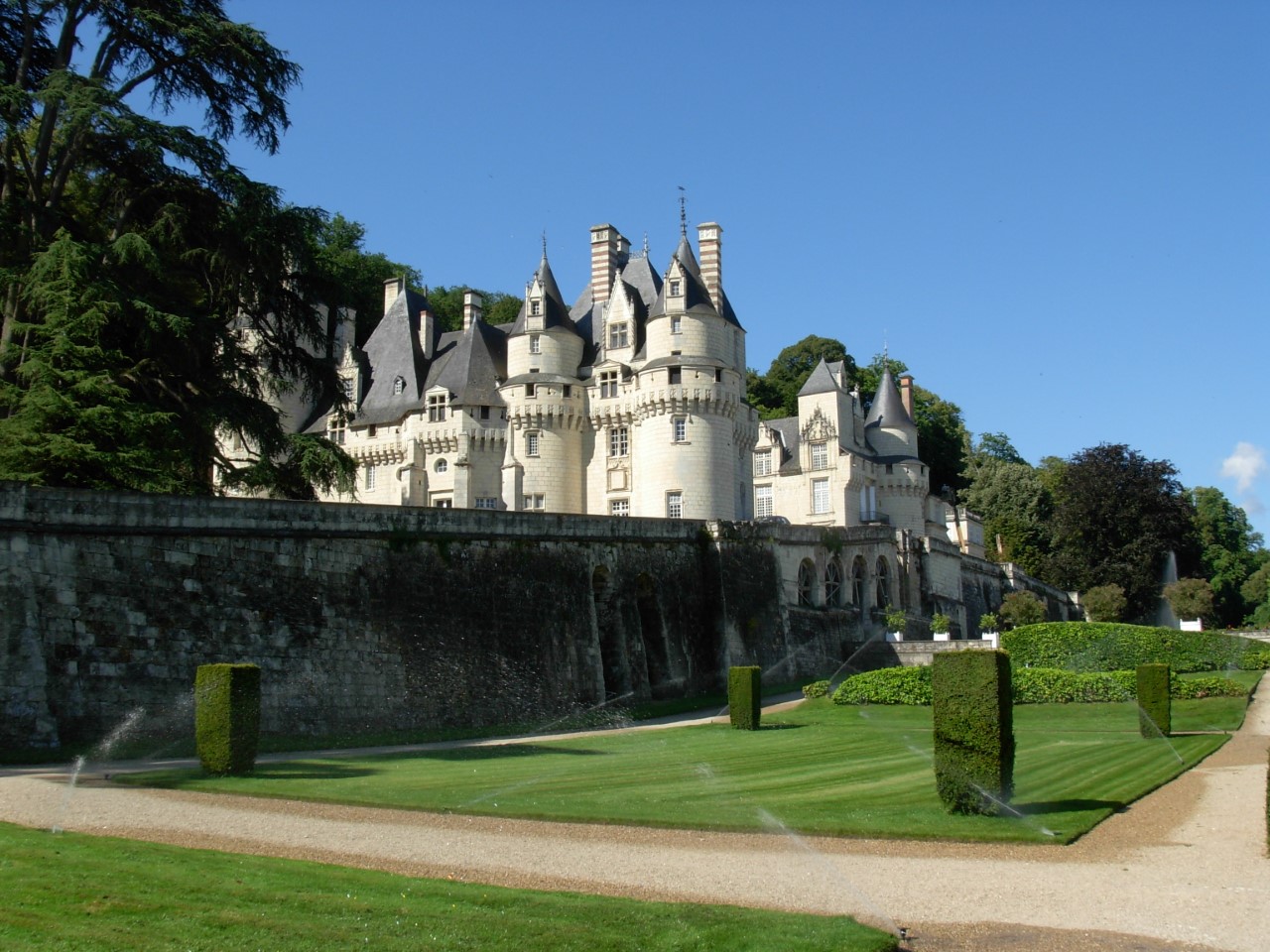
Although the original stronghold dates back to the year 1000, the pretty, turreted version that inspired the author of Sleeping Beauty was built in the 16th century. Adults and children alike will enjoy the displays that re-enact the story and soaking up the magic of this sprawling chateau set in beautifully manicured grounds.
In true fairytale style, the property shook off its ugly early fortress style and was transformed into a beautiful castle which is now the home of the Duke of Blacas and open to visitors. Admire its historic tapestries, original Renaissance furniture, the vault, and the King’s bedroom where Louis 14th stayed during his visits. Scenes from Sleeping Beauty adorn the walls of the dungeon, and the stables now house horse-drawn carriages and a convertible car.
The gardens are equally as delightful and were designed by André Le Nôtre, the illustrious landscaper that also designed the grounds at Versailles.
Name: Angers
Place: Angers
Era: Mediaeval
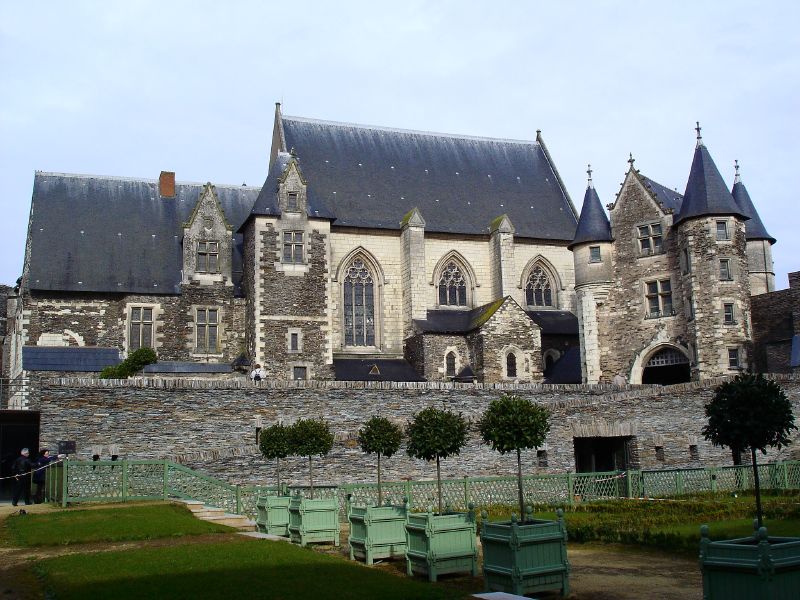
At the Western tip of the Loire Valley, Angers castle is a sturdy elephant-footed castle in the centre of the town, on the banks of the River Maine. It was home to the Counts of Anjou from as far back as the ninth century, and the fortress as we know it originated in the 13th century.
This is clearly a castle designed for battle, with its ten-foot thick walls, 17 towers, drawbridge and moat. It was used as a prison in the 19th century and as a military stronghold during World War II.
Today, the castle’s most famous resident is the Apocalypse tapestry which illustrates the end of the world as recounted in the Book of Revelations. The 14th-century tapestry is a hand-embroidered work of art, stretching for 45 metres long and six metres high. The gardens are romantic and delightful and the castle is a more leisurely size to explore than its decadent Renaissance counterparts. Visitors can take in panoramic views from the ramparts and turrets, admire the herb garden and enjoy light refreshments at the outdoor café. In the summer, the castle and other historic monuments turn into an open-air light and story fest that attracts throngs of spectators.
SOUTH WEST
The South West has a fabulous selection of ancient castle relics perched in historic hilltop locations which afford stunning views of the mountainous valleys beyond.
Name: The 4 castles of Lastours (Cabaret, Tour Régine, Surdespine and Quertineux)
Place: Lastours, Aude
Era: Roman to Mediaeval
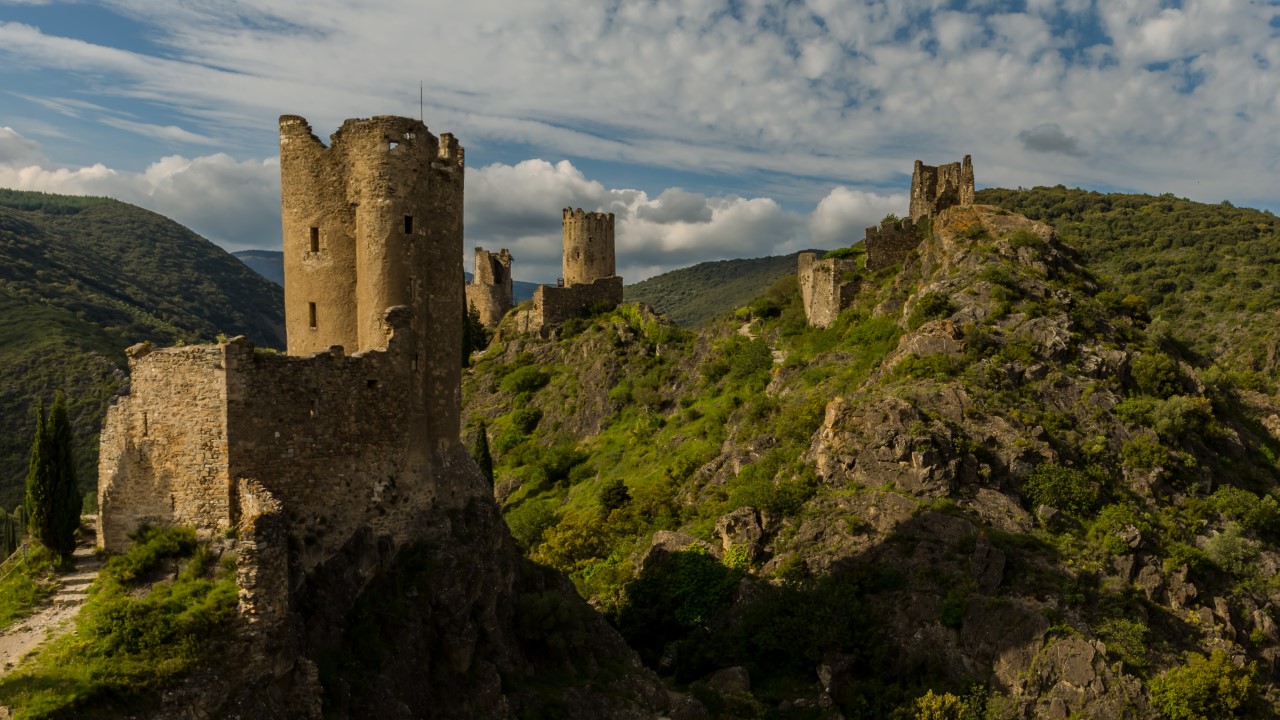
Why limit yourself to one castle when you can have four?
Lastours is a history-packed archaeological site. The remains of its four castles tower above the mediaeval village of Cabaret on the banks of the Orbiel river.
Mighty strongholds once stood proudly aligned along the hilltops, and came into their own during the 13th-century crusades when they offered refuge to followers of the Cathar religious movement who were persecuted by the Catholic crusaders. The castles were abandoned in later centuries. Today, only ruins remain, but these historic pinnacles are packed with a sense of history and have lost none of their fabulous vistas.
Name: The Five Sons of Carcassonne (The Cathar Castles)
Place: Languedoc (Puilaurens, Queribus, Peyrepertuse, Aguilar and Termes)
Era: Roman to Mediaeval
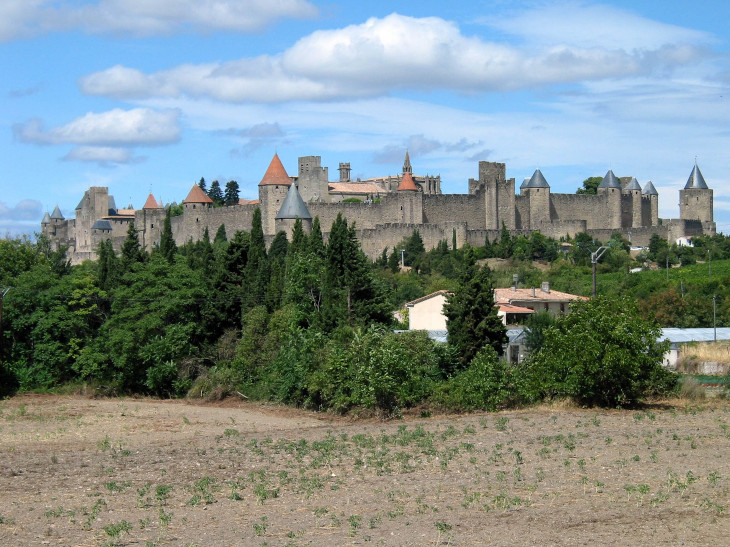
In a splendid display of one-up manship, Lastours’ neighbour Carcassonne boasts no less than six castles in total.
Carcassonne is a beautiful French mediaeval town which has an impressive castle of its own (well worth a visit while you’re there). But beyond the “father” castle lie its five sons - a handful of hilltop fortresses in the surrounding area. If you’re looking for something a little more challenging than wandering around stately establishments, then this family of Cathar castles should fit the bill. The climb up is an experience in itself and there’s a strange sense of satisfaction to be gained from notching them up over a couple of days.
Aguilar is the gentlest climb, at just 96 metres above sea level, while Queribus and Peyrepertuse – perhaps the most well-preserved of the ensemble – are perched at over 700 metres. Meanwhile, Aguilar and Termes castles may have little left in the way of structure, but what they lack in construction they more than make up for in panoramic views.
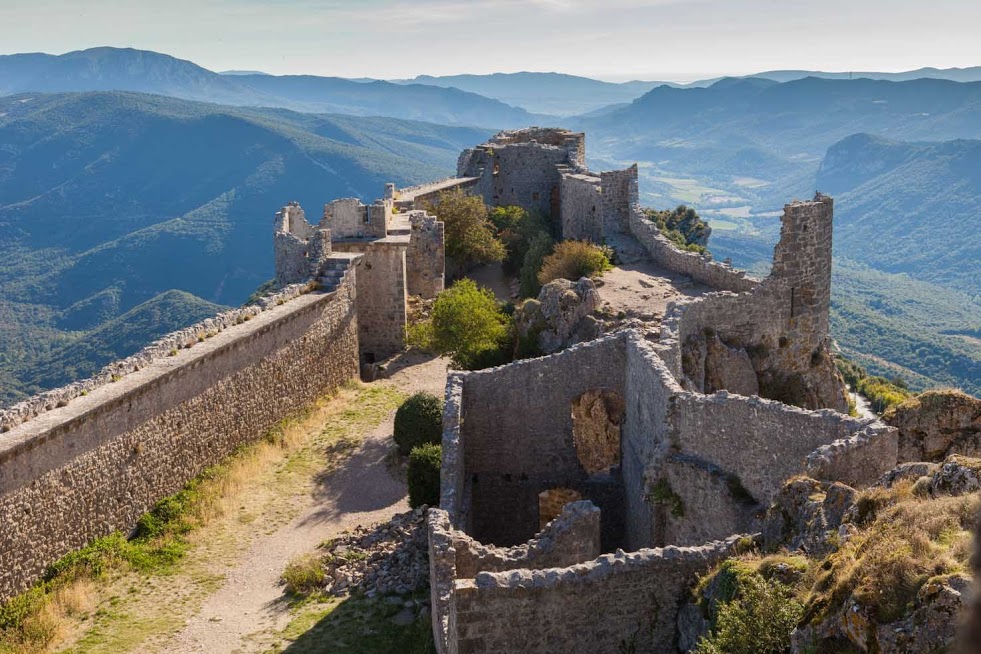
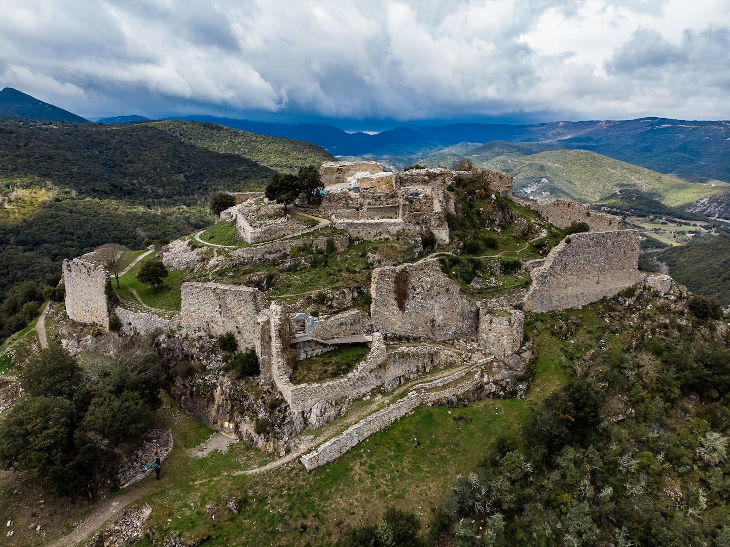
DORDOGNE
Name: Château de Marqueyssac and its Hanging Gardens
Place: Vézac
Era: Renaissance
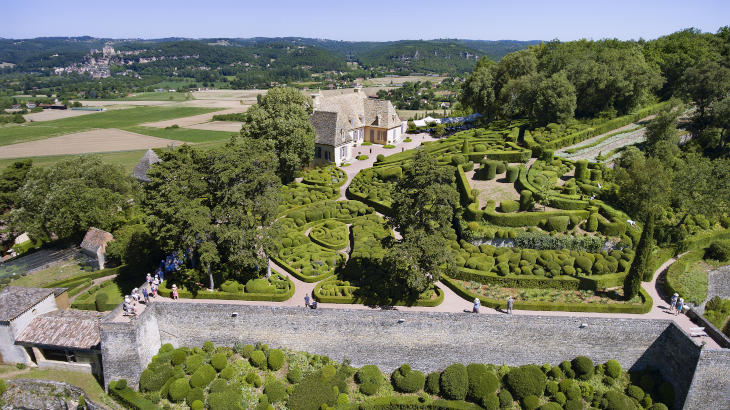
Although this site does have a modest 18th-century chateau, the real star of the show is the stunning garden. The Jardins de Marqueyssac is a breathtaking masterpiece of imaginatively sheared maze-like shrubs, meandering walks and romantic waterfalls. Three pathways culminate in a hilltop vantage point with panoramic views over valleys, hills and villages.
Name: Beynac Castle
Place: Beynac-et-Cazenac, near Sarlat
Era: Mediaeval
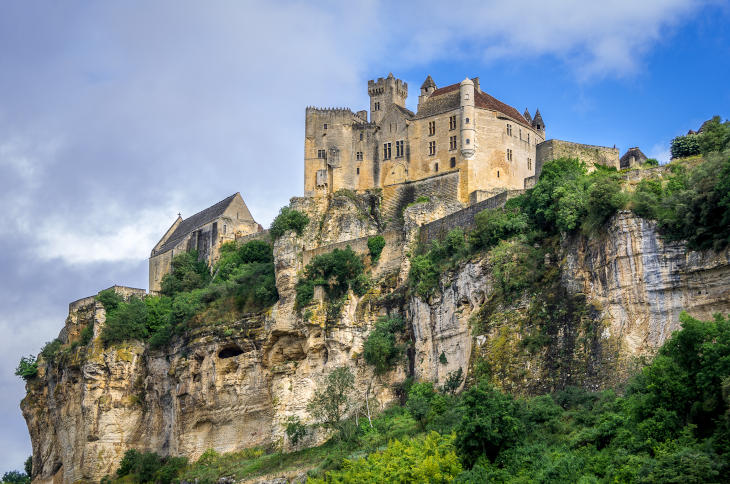
This fortified castle is perched atop a vertiginous cliff, towering over the ochre stone houses that unfold down the hillside to the Dordogne river. The original stronghold was built by Richard the Lionheart in the 12th century, and was extended and enhanced over the years to incorporate architectural features of different eras, such as a Renaissance staircase and Italian-style courtyard.
Visit the original keep, admire 15th-century frescoes, and soak up the 360° view of the Vézère river and the valley of five castles that lies below. As the name suggests, visit the Dordogne and you’ll have a castle tour itinerary ready to go. The lively village of Beynac is also one of France’s Most Beautiful Villages, picturesque by day and magical by night.
Name: Losse Castle
Place: Montignac-Lascaux
Era: Renaissance
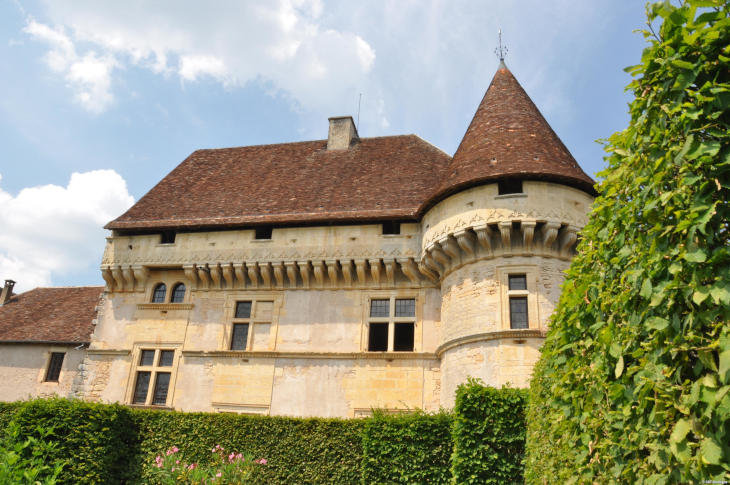
Losse castle – Losse castle is located between Lascaux and Les Eyzies in Green Perigord and is another beautiful chateau on the banks of the Vézère river. It was built in the 16th century as part of a new wave of enchanting designs during the crossover period between the Valois and the Bourbon dynasties, and comes with fairytale turrets, beautifully furnished rooms and impeccably sculpted gardens. Original furniture, muted tapestries and a (now planted) moat will whisk you back to the Middle Ages as if it were yesterday. The beautifully designed garden is worth a visit in its own right.
PROVENCE
Name: Tarascon Castle
Place: Tarascon
Era: Mediaeval
Like its counterpart in Angers, Tarascon castle was built by the Dukes of Anjou, who were also the Counts of Provence, to maintain their grip over Italy from a strategic location near the Rhone river.
It was built between 1400 and 1435 based on the design of the Bastille in Paris, and served as a military stronghold and royal residence for Good King René. It was built for battle and didn’t disappoint – it was the scene for many a feud, including the crusades and the Spanish wars. It was also used to detain prisoners of war from many European countries.
Today it houses sculptures and exhibitions and visitors admire its ceiling friezes and great views from the top of the tower which overlook the mediaeval village of Tarascon, the Rhone river and the Provencal countryside.
Name: Château des Baux de Provence
Place: Les Baux de Provence
Era: Roman to Mediaeval
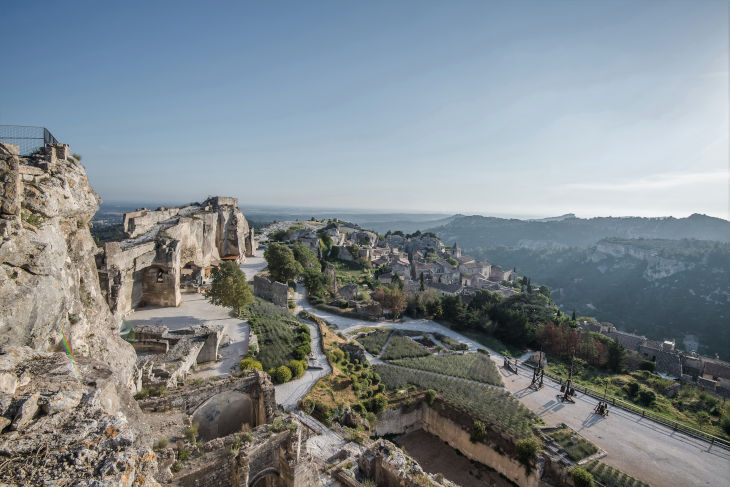
Only ruins remain of this castle with a tumultuous past, but the site which has fuelled myth and legend since the dawn of time continues to ooze dramatic splendour. Set atop a rocky clifftop in what’s known as the Valley of Hell (it inspired Dante’s Divine Comedy), it is closely associated with prominent female personalities. Firstly, the three Marys – Mary Magdalene, Mary Salome and Mary Jacobé – who were refused refuge here; shortly after, Les Baux was struck by a vicious epidemic. And later, it was owned by Queen Joan of Naples, a patron of the poets of her time. The citadel met its demise in the 17th century when King Louis 16th burned it down following an uprising of protestors.
The cobblestone village is a delight to stroll through, and the walk up to the castle ruins is filled with the views and fragrances that the Mediterranean does so well, an uplifting blend of olive groves, vineyards and a gentle sea breeze.
Name: If castle
Place: If island, off the coast of Marseille
Era: Mediaeval
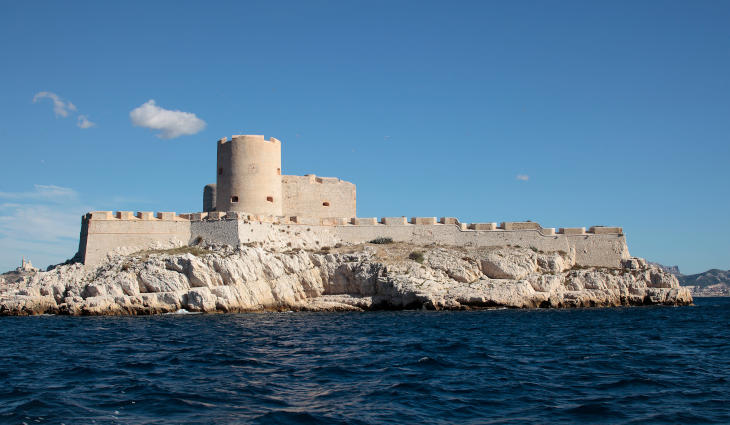
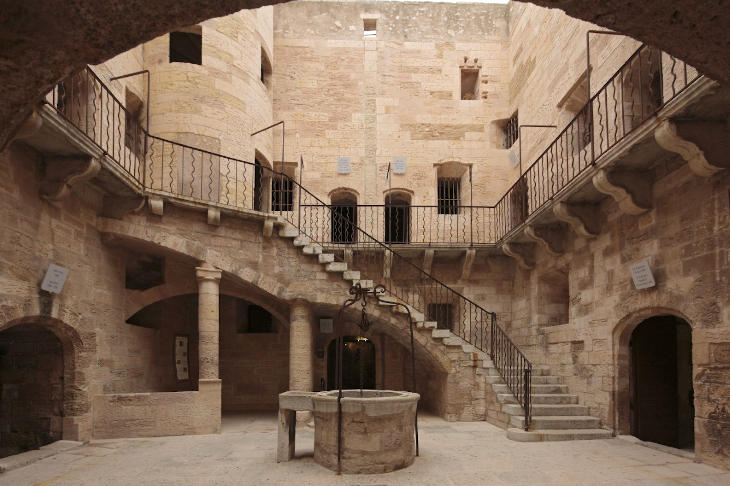
This isolated island fortress was built in 1524 by King Francis 1st as a means of strategic defence, although its principal use was that of a prison. The chateau is on one of the four islands that make up the Frioul archipelago just off the coast of Marseille. The two biggest islands, Pomègues and Ratonneau, are inhabited, connected by a causeway and are dotted with cute sandy coves, while If island has a more hostile setting, surrounded by sheer drops into choppy seas.
Poor prisoners usually didn’t last long here, hovelled up among the damp and dirt of the basement cells, while richer inmates fared slightly better on the upper floors. This was the setting for Alexandre Dumas’ novel and the subsequent film, The Count of Monte Cristo. Take a boat out to the island, visit the chateau, then bask in the peace, sunshine and fabulous views of this magical cluster of islands.